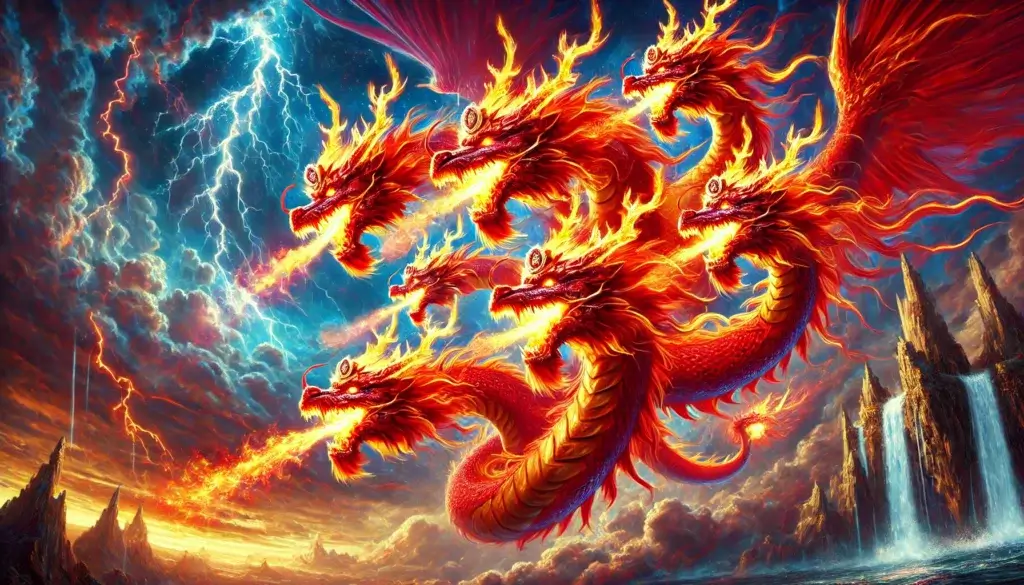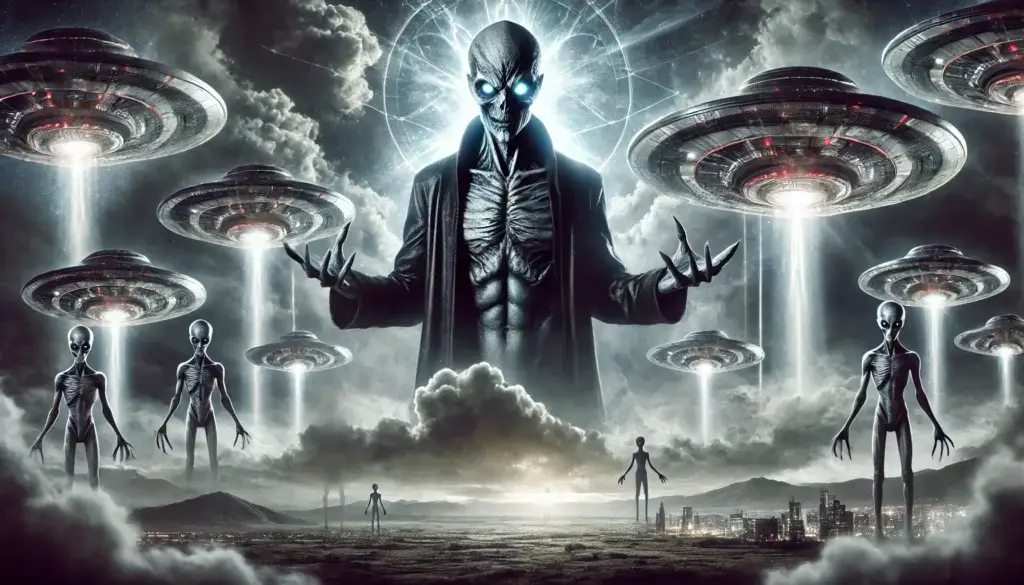The Antichrist will appear in the guise of Christ, to oppose Christ. Paul called him the “Son of Destruction” which implies a Jewish-Christian miracle worker evangelist. His name is Adonikam and he will rise from obscurity near the ancient city of Antioch, modern Turkey. He is from ancient Nineveh, the outskirts of Mosul Iraq.
The Antichrist has two phases. For 3.5 years he is the “Man of Sin” “false Christ” speaking through a mouth “like a lion” (2Th. 2:3. Rev. 13:2), then he opposes the historic definitions of God speaking blasphemies (Rev. 13:5) pompously exalting himself above them all as the “Son of Destruction” (2Th. 2:3-4) “Seed of Satan” (Gen. 3:15) “Antichrist”, denying the Father and the Son (1Jo. 2:18, 22; 2Jo. 1:7).
An outline of the Antichrist follows, purple text divides each main section.
The name of the Antichrist is Adonikam (Rev. 13:18; Ezra 2:13)
Here is wisdom. Let him who has understanding calculate the number of the beast, for it is the number of a man: His number is 666. (Rev. 13:18 NKJ)
the sons of Adonikam, 666 (Ezr. 2:13 NAS)
the sons of Adonikam, 667 (Neh. 7:18 NAS)
John gives three clues how 666 points to one name.
1) “Calculate the number” (666+1=667 Adonikam).
2) “Number OF a man” (666 sons are “OF” the man Adonikam)
3) “His number is 666” (Only the man named Adonikam has 666 sons):
John wasn’t like modern critics, he would consider the difference in number intentional. Experts in Hebrew Scripture will immediately recognize John’s riddle is a asymmetric Janus Parallelism (Gen. 6:3; 49:26; Cant. 2:12; Ezek. 20:37; Dan. 11:35; Nah. 1:8)
Adonikam had 666 sons, or perhaps counting from his father also named Adonikam, 667 sons.
From the “Janus” 666 we look back and “count” (5585 ψηφίζω psephizo) “as with pebbles” 666+1=667 to “Adonikam” as the Beast’s name.
From the “Janus” 666 we look forward, Adonikam had 666 sons, they are “of” him. Again the name Adonikam appears.
The only “man’s name” in Scripture linked with 666 is “Adonikam”.
“Therefore, “His [Adonikam] number is 666.”
Hebrew Scholar Cyrus Gordon discovered ancient Hebrews used parallelism to communicate meaning, today called Janus Parallelism. Examples can be found in Gen. 6:3; 49:26; Cant. 2:12; Ezek. 20:37; Dan. 11:35; Nah. 1:8; Mat. 16:18.
Janus Parallelism. This type of parallelism hinges on the use of a single word with two different meanings, one of which forms a parallel with what precedes and the other with what follows. Thus, by virtue of a double entendre, the parallelism faces in both directions. Berlin, A. (1992). Parallelism. In D. N. Freedman (Ed.), The Anchor Yale Bible Dictionary (Vol. 5, p. 157). New York: Doubleday.
The Antichrist is the Seed of Satan who wars against the Seed of the Woman “Christ” (Gen. 3:15)
And I will put enmity between thee and the woman, and between thy seed and her seed; it shall bruise (07779 שׁוּף shuwph) thy head, and thou shalt bruise (07779 שׁוּף shuwph) his heel. (Gen. 3:15 KJV)
Observe the shift, the hatred is between the Serpent’s seed (the Antichrist) and the Woman’s seed (the Christ):
Her seed will crush (07779 שׁוּף shuwph) “thy head”;
And “THOU” (not just “thy seed”) will crush (07779 שׁוּף shuwph) His heel.
Its two against One. The Serpent and Antichrist seed combined crush Christ’s heel, but Christ crushes their collective “head”, a fatal wound to both.
Man of Sin (2 Thess. 2:3)
. Ἄνθρωπος τῆς ἁμαρτίας answers to the Hebrew אִישׁ אָוֶן, Isaiah 55:7; Prov. 6:12.-Olshausen, H., Ebrard, J. H. A., & Wiesinger, A. (1857–1859). Biblical Commentary on the New Testament by Dr. Hermann Olshausen. (A. C. Kendrick & D. Fosdick Jr., Trans.) (Vol. 5, p. 315). New York: Sheldon, Blakeman, & Co.
“A man of iniquity”, “sin”:
12 A worthless person, a man of iniquity, Is he that walketh with a perverse mouth;
13 That winketh with his eyes, that speaketh with his feet, That maketh signs with his fingers;
14 In whose heart is perverseness, Who deviseth evil continually, Who soweth discord.
15 Therefore shall his calamity come suddenly; On a sudden shall he be broken, and that without remedy. (Prov. 6:12-15 ASV)
As he feigns to be Christ, he is “the teacher of unrighteousness”, a man condoning every sin and apostasy in the church, the “signs and wonders” he does are “lying” because they are cited to authenticate falsehood as truth (2 Thess. 2:9-12).
Son of Destruction (2 Thess. 2:3)
…The son of perdition (684 ἀπώλεια apoleia), who opposes and exalts himself above all that is called God or that is worshiped, so that he sits as God in the temple of God, showing himself that he is God. (2 Thess. 2:3-4 NKJ)
“Son of perdition” is an interpretation, when literally translated “the son of destruction (684 ἀπώλεια apoleia)”.
Judas was also a “son of destruction” (John 17:12), Satan possessed Judas and he betrayed Christ (Lk. 22:3-4):
Now after the piece of bread, Satan entered him. Then Jesus said to him, “What you do, do quickly.” (Jn. 13:27 NKJ)
“Son of” is Jewish idiom for “descendent of” and in context the “son of Destruction” who opposes and exalts himself above Yehovah God is very much a “descendent of Satan,” just like him.
Confirming the connection, in the book of Revelation Satan is called “Destruction”:
And they had as king over them the angel of the bottomless pit, whose name in Hebrew is Abaddon, but in Greek he has the name Apollyon. (Rev. 9:11 NKJ)
011 אֲבַדּוֹן ‘abaddown {ab-ad-done’}
Meaning: 1) place of destruction, destruction, ruin, Abaddon
Satan is “Ruler” (758 ἄρχων archon) of the demons” (Mt. 12:24). “Ruler” and “King” (935 βασιλεύς basileus) are synonyms. As there can be only one “ruler” or “king” over the demons, Satan must be the “angel of the abyss” (ἄγγελον τῆς ἀβύσσου) whose name is “Abaddon”.
“Abaddon” in Hebrew can be translated “Destruction” in both English (JPS Tanakh: Job 26:6; 28:22; 31:12; Ps. 88:11; Prov. 15:11; 27:20) and Greek Septuagint (ἀπώλεια apoleia: Ps. 88:12; Prov. 15:11; 27:20).
Therefore, when Paul calls the Antichrist the “Son of Destruction” he is not talking about his destiny, he is referring to his activity that is just like his father the Devil, he opposes and exalts himself above God proving he is “the Son of Satan”, his “seed” (Gen. 3:15).
NOTES:
07779 שׁוּף shuwph {shoof}
Meaning: 1) to bruise, crush, gape upon, desire?, seize?, strike out? 1a) (Qal) to fall upon, bruise
“To begin with the earliest evidence [about A.D. 210], in Hippolytus…we read: “In the form of man appeared the Saviour, and he also [the Antichrist] shall come in the form of man.” From this quite another representation might be inferred. Farther on, where we are told of the birth of the Antichrist in the tribe of Dan, it is added (chap. xiv.): “ ‘Dan shall be a serpent.’ … But who is the serpent except the deceiver from the beginning, he who in Genesis is called the beguiler of Eve and the crusher of Adam?” In what follows the Antichrist would seem to be called “the devil’s son.” Although the identification is not complete, still for Hippolytus the Antichrist is in any case Satan incarnate. “ -Bousset, W. (1896). The Antichrist Legend: A Chapter in Christian and Jewish Folklore (p. 140). London: Hutchinson and Co.
Contradicting Hippolytus the Antichrist appears with Satan in Revelation 13:4; 16:13 therefore he cannot be Satan incarnate.
However, Hippolytus was on the right track, in view of Genesis 6:2, 4 its possible Satan impregnate a woman, and the hybrid “Elohim-human” would recall the “mighty men of old, the men of renown” (Gen. 6:4) possibly giving rise to be belief in “Titans” in Greek Mythology.
The Antichrist is from the Tribe of Dan (Gen. 49:16-18)
16 Dan shall judge (01777 דִּין diyn) his people, as one of the tribes of Israel.
17 Dan shall be a serpent by the way, an adder in the path, that biteth the horse heels, so that his rider shall fall backward.
18 I have waited (06960 קָוָה qavah) for thy salvation, O LORD. (Gen. 49:16-18 KJV)
End Time events clarify (1 Pet. 1:12; Dan. 12:9) Jacob’s warning about Dan.
From Dan the Antichrist will come. He will strive (01777 דִּין diyn Gen. 6:3; 15:14) against his people feigning tribal loyalty, “as one of the tribes of Israel”. With the Serpent this demon viper strikes Christ’s heel (Gen. 3:15) hoping to throw Him off His horse (Rev. 19:11; Dan. 8:11). The vision so troubled Jacob he cries out: “I look for your salvation, O Yehovah”.
NOTES:
01777 דִּין diyn {deen} or )Gen. 6:3דּוּן duwn {doon}
Meaning: 1) to judge, contend, plead 1a) (Qal) 1a1) to act as judge, minister judgment 1a2) to plead a cause 1a3) to execute judgment, requite, vindicate 1a4) to govern 1a5) to contend, strive 1b) (Niphal) to be at strife, quarrel
06960 קָוָה qavah {kaw-vaw’}
Meaning: 1) to wait, look for, hope, expect 1a) (Qal) waiting (participle) 1b) (Piel) 1b1) to wait or look eagerly for 1b2) to lie in wait for 1b3) to wait for, linger for 2) to collect, bind together 2a) (Niphal) to be collected
“The usual word for “snake” (nāḥāš) is matched by the rare term “viper,” occurring only here (šĕpîpōn, “horned snake”?). The imagery of a small, obscure snake that strikes (“bites,” nōšēk) an unsuspecting passerby illustrates the stealth of this lethal opponent (e.g., Jer 8:17; Amos 9:3). The tactic of surprise attack brought down the more prosperous but trusting city Laish (Judg 18:7, 10, 27). A reflex of the garden imagery (Gen. 3:15) is apparent, where snapping at the “heel” injures the victim (cf. Gad, Gen. 49:19). Moreover, “heel” (ʿāqēb) in vv. Gen. 49:17, 19 recalls the play on Jacob’s name (Gen. 25:26; 27:36). The picture of Dan is not as victim but victimizer, like the serpent in the garden or Jacob the deceiver.”-Mathews, K. A. (2005). Genesis 11:27–50:26 (Vol. 1B, p. 900). Nashville: Broadman & Holman Publishers.
Additional indications Antichrist is from Tribe of Dan
And of Dan he said: “Dan is a lion’s whelp; He shall leap (02187 זָנַק zanaq) from Bashan (01316 בָּשָׁן Bashan).” (Deut. 33:22 NKJ)
“The church father Hippolytus understood this metaphorical reference as a typological expression of Satanic opposition to Jesus. He found further support for his view in the messianic description of Judah that is also in this chapter (Gen 49:10). In addition, he observed that only the tribes of Judah and Dan are referred to as a “lion’s whelp” in the OT (Gen 49:9; Deut 33:22). He viewed this as a deliberate juxtaposition of Judah and Dan—in his view, one produces the Christ, while the other produces the antichrist.
Finally, Jewish writers during the Second Temple period (fifth century BC–AD 70) also viewed Dan with suspicion for some of the same reasons. For them, the association of Dan with the northern region of Bashan was consistent with the OT “foe from the north” motif. Israel was habitually attacked from the north because of its geographical location along established travel routes. There are multiple passages that describe the threat of invasion from the north (Isa 49:12; Jer 1:13–14; 16:15; 46:6; Ezek 38:6, 15; 39:2). The north (tsaphon in Hebrew) is also laden with religious-mythological significance. In Ugaritic mythology, ts-p-n is the name of the cosmic holy mountain of Baal, the place of the Ugaritic divine council or pantheon.”-Heiser, M. S. (2012, 2016). Dan and the Antichrist Tradition. In Faithlife Study Bible. Bellingham, WA: Lexham Press.
16 The snorting of His horses was heard from Dan. The whole land trembled at the sound of the neighing of His strong ones; For they have come and devoured the land and all that is in it, The city and those who dwell in it.”
17 “For behold, I will send serpents among you, Vipers which cannot be charmed, And they shall bite you,” says the LORD.
18 I would comfort myself in sorrow; My heart is faint in me. (Jer. 8:16-18 NKJ)
If “serpents…vipers” (Jer. 8:17) refers to “all the power of the enemy” (Lk. 10:19), then Jeremiah’s cry of sorrow for his people (Jer. 8:18) is similar to Jacob’s state of mind when he prays: “I look for your salvation, O Yehovah” (Gen. 49:18).
The Antichrist comes out of the ancient city of Nineveh the ruins of which are in the outskirts of modern Mosul, Northern Iraq. (Nah. 1:1)
There is one come out of thee [Nah. 1:1 Nineveh], that imagineth evil against the LORD, a wicked (01100 בְּלִיַּעַל beliya`al) counsellor (03289 יָעַץ ya`ats). (Nah. 1:11 KJV)
The “wicked counsellor”, advising wicked things of Belial, is the antithesis of the “Wonderful Counselor”, advising wonderful things of God:
For unto us a Child is born, Unto us a Son is given; And the government will be upon His shoulder. And His name will be called Wonderful, (06382 פֶּלֶא pele’) Counselor (03289 יָעַץ ya`ats), Mighty God, Everlasting Father, Prince of Peace. (Isa. 9:6 NKJ)
The Tribe of Dan was last seen in Assyria:
Antiquities of the Jews 11:133
and came to Babylon, as very desirous of going down to Jerusalem; but then the entire body of the people of Israel remained in that country; therefore there are but two tribes in Asia and Europe subject to the Romans, while the ten tribes are beyond Euphrates till now, and are an immense multitude, and not to be estimated by numbers. (Ant. 11:133 JOE)
NOTES:
01100 בְּלִיַּעַל beliya`al {bel-e-yah’-al}
Meaning: 1) worthlessness 1a) worthless, good for nothing, unprofitable, base fellow 1b) wicked 1c) ruin, destruction (construct).
06382 פֶּלֶא pele’ {peh’-leh}
Meaning: 1) wonder, marvel 1a) wonder (extraordinary, hard to understand thing) 1b) wonder (of God’s acts of judgment and redemption)
03289 יָעַץ ya`ats {yaw-ats’}
Meaning: 1) to advise, consult, give counsel, counsel, purpose, devise, plan 1a) (Qal) 1a1) to advise, counsel, give counsel, consult 1a2) counsellor (participle) 1b) (Niphal) to consult together, exchange counsel, deliberate, counsel together 1c) (Hithpael) to conspire.
The Tribe of Dan was known to be in the region of ancient Assyria:
“…But then the entire body of the people of Israel remained in that country; therefore there are but two tribes in Asia [Palestine] and Europe subject to the Romans, while the ten tribes are beyond Euphrates till now, and are an immense multitude, and not to be estimated by numbers.” (Antiquities of the Jews 11:133)
“In the land of Assyria”―these are the ten tribes.”-Neusner, J. (2008). The Jerusalem Talmud: A Translation and Commentary. Peabody, Massachusetts: Hendrickson Publishers.
The Lawless One, “that Wicked”:
And then shall that Wicked (459 ἄνομος anomos) be revealed, whom the Lord shall consume with the spirit of his mouth, and shall destroy with the brightness of his coming: (2 Thess. 2:8 KJV)
459 ἄνομος anomos
Meaning: 1) destitute of (the Mosaic) law 1a) of the Gentiles 2) departing from the law, a violator of the law, lawless, wicked
“Counselor of Belial” בְּלִיַּעַל (Nah. 1:11, 15 MT), hence “Lawless Wicked” (LXX) ἀνομία (2 Sam. 22:5; Ps. 17:5); ἀνόμημα (Deut. 15:9); παράνομος (Dt. 13:14; Judges 19:22; 2 Sam. 16:7; 20:1; 1 Ki. 20:10, 13; 2 Chron. 13:7; Ps. 41:8; 100:3; Prov. 6:12); παρανομέω (Job 34:18).
Belial is another name for Satan:
And what concord hath Christ with Belial? or what part hath he that believeth with an infidel? (2 Cor. 6:15 KJV)
Son of Perdition: A Jewish Christian Miracle Working Evangelist (2 Thess. 2:3; Dan. 11:37)
3 Let no one deceive you by any means; for that Day will not come unless the falling away comes first, and the man of sin is revealed, the son of perdition,
4 who opposes and exalts himself above all that is called God or that is worshiped, so that he sits as God in the temple of God, showing himself that he is God. (2 Thess. 2:3-4 NKJ)
Christ calls Judas “the son of perdition” (Jn. 17:12). He was a Jewish Christian miracle working evangelist (Luke 9:1). Paul’s allusion is thematic coherence, the “man of sin” leads a global apostasy from all called God or worshiped, by betraying Christ and working signs and wonders (2 Thess. 2:9).
12 “While I was with them in the world, I kept them in Your name. Those whom You gave Me I have kept; and none of them is lost except the son of perdition, that the Scripture might be fulfilled. (Jn. 17:12 NKJ)
Confirming he is a Jewish Christian, the Antichrist will “regard neither the God of his fathers” (2 Ki. 21:22; 2 Chr. 21:10; 28:25; 30:19; 33:12) or…
The “desire of women”. That is a prophetic reference to God the Son Jesus Christ (Mark 14:3; Luke 7:38; John 12:3), not homosexuality. The “desire of women” is in the “god category” as it is sandwiched between “God of his fathers….nor any god”.
36 “Then the king shall do according to his own will: he shall exalt and magnify himself above every god, shall speak blasphemies against the God of gods, and shall prosper till the wrath has been accomplished; for what has been determined shall be done.
37 “He shall regard neither the God of his fathers nor the desire of women, nor regard any god; for he shall exalt himself above them all. (Dan. 11:36-37 NKJ)
King of the North (Dan. 11:40-12:1)
40 “At the time of the end the king of the South shall attack him; and the king of the North shall come against him like a whirlwind, with chariots, horsemen, and with many ships; and he shall enter the countries, overwhelm them, and pass through.
41 “He shall also enter the Glorious Land, and many countries shall be overthrown; but these shall escape from his hand: Edom, Moab, and the prominent people of Ammon.
42 “He shall stretch out his hand against the countries, and the land of Egypt shall not escape.
43 “He shall have power over the treasures of gold and silver, and over all the precious things of Egypt; also the Libyans and Ethiopians shall follow at his heels.
44 “But news from the east and the north shall trouble him; therefore he shall go out with great fury to destroy and annihilate many.
45 “And he shall plant the tents of his palace between the seas and the glorious holy mountain; yet he shall come to his end, and no one will help him.
12:1 “At that time Michael shall stand up, The great prince who stands watch over the sons of your people; And there shall be a time of trouble, Such as never was since there was a nation, Even to that time. And at that time your people shall be delivered, Every one who is found written in the book. (Dan. 11:40-12:1 NKJ)
King of Babylon (Isa. 14:4)
3 It shall come to pass in the day the LORD gives you rest from your sorrow, and from your fear and the hard bondage in which you were made to serve,
4 that you will take up this proverb against the king of Babylon, and say: “How the oppressor has ceased, The golden city ceased!
5 The LORD has broken the staff of the wicked, The scepter of the rulers;
6 He who struck the people in wrath with a continual stroke, He who ruled the nations in anger, Is persecuted and no one hinders.
7 The whole earth is at rest and quiet; They break forth into singing. (Isa. 14:3-7 NKJ)
Lucifer “son of the morning” (Isa. 14:12)
12 “How you are fallen from heaven, O Lucifer, son of the morning! How you are cut down to the ground, You who weakened the nations!
13 For you have said in your heart:`I will ascend into heaven, I will exalt my throne above the stars of God; I will also sit on the mount of the congregation On the farthest sides of the north;
14 I will ascend above the heights of the clouds, I will be like the Most High.’
15 Yet you shall be brought down to Sheol, To the lowest depths of the Pit.
16 “Those who see you will gaze at you, And consider you, saying:`Is this the man who made the earth tremble, Who shook kingdoms,
17 Who made the world as a wilderness And destroyed its cities, Who did not open the house of his prisoners?’ (Isa. 14:12-16 NKJ)
Many believe Satan is called “Lucifer”, but the Antichrist can also have the name because he “exalts himself above all that is called God or that is worshiped” (2 Thess. 2:4).
However, Isaiah 14:16 calls “Lucifer” a man, the “King of Babylon” (Isa. 14:4). He wants to be “like the Most High” parallels what the Antichrist will do (Dan. 7:8, 11; 8:9-11, 24-25; 11:36-37).
The Title “Son of the morning” is like Christ’s title “the Bright and Morning Star” (Rev. 22:16).
The Assyrian (Isa. 14:25)
25 That I will break the Assyrian in My land, And on My mountains tread him underfoot. Then his yoke shall be removed from them, And his burden removed from their shoulders.
26 This is the purpose that is purposed against the whole earth, And this is the hand that is stretched out over all the nations.
27 For the LORD of hosts has purposed, And who will annul it? His hand is stretched out, And who will turn it back?” (Isa. 14:25-27 NKJ)
5 And this One shall be peace. When the Assyrian comes into our land, And when he treads in our palaces, Then we will raise against him Seven shepherds and eight princely men.
6 They shall waste with the sword the land of Assyria, And the land of Nimrod at its entrances; Thus He shall deliver us from the Assyrian, When he comes into our land And when he treads within our borders. (Mic. 5:5-6 NKJ)
NOTES:
Isaiah 14:25 was not fulfilled in Sennacherib (Isa. 37:36-37), he died in the temple of his god Nisroch in Nineveh, not on the mountains of Israel. Also, it is purposed “against the whole earth,” not Assyria only.
Micah’s prophecy is about Christ from Bethlehem Ephrathah, the Ruler in Israel whose goings are from old, everlasting. The time is during His millennial kingdom, “And this One shall be peace” (Mic. 5:2-5).
Then it flashes back in time (like a Quentin Tarantino film) to the time of the Antichrist’s occupation of Jerusalem. The reference to “seven shepherds and eight princely men” is a plural of majesty reference to Christ, when “He shall deliver us from the Assyrian.” “He is our peace” (Mic. 5:5). His people raise Christ up in Faith, trust in His Name.
“The Desolator” (Dan. 8:13; 9:27; 12:11)
“Desolator, Destroyer, Devastator” is an alternate Translation for “desolation” (08074 שָׁמֵם shamem)”
desolating = destroyer, devastator Dn 8:13; 9:27; šiqqûš šômêm Dn 12:11 evidently word-play on baʿal šāmêm.-Holladay, W. L., & Köhler, L. (2000). A concise Hebrew and Aramaic lexicon of the Old Testament (p. 376). Leiden: Brill.
Then I heard a holy one speaking; and another holy one said to that certain one who was speaking, “How long will the vision be, concerning the daily sacrifices and the transgression of desolation (08074 שָׁמֵם shamem) [Desolator, Destroyer; Devastator], the giving of both the sanctuary and the host to be trampled under foot?” (Dan. 8:13 NKJ)
Twice:
He will make a strong covenant with leaders for one week [of years]. For half of the week he will put a stop to the sacrifice and the grain offering. On the wing of detestable things the desolator (08074 שָׁמֵם shamem) [Desolator, Destroyer; Devastator] will come and continue until the already decreed destruction is poured out on the desolator (08074 שָׁמֵם shamem) [Desolator, Destroyer; Devastator] .” (Dan. 9:27 CJB)
“And from the time that the daily sacrifice is taken away, and the abomination of desolation (08074 שָׁמֵם shamem) [Desolator, Destroyer; Devastator] is set up, there shall be one thousand two hundred and ninety days. (Dan. 12:11 NKJ)
In Daniel 9:27 the “Desolator” flies a “wing (singular) of abominations (08251 שִׁקּוּץ shiqquwts)” (plural) in a pretension to deity. “Abominations” is plural because the “flying wing” is infested with demons (1 Cor. 10:19-20).
The plural šiqqûṣîm, ‘abominations’, refers to unspecified deities other than the LORD and their respective cult statues in Deut 29:16; Jer 7:30; 16:18; 32:34; Ezek 5:11; 7:20; 11:21; 20:7, 8, 30; 37:23.-Gruber, M. I. (1999). Abomination. In K. van der Toorn, B. Becking, & P. W. van der Horst (Eds.), Dictionary of Deities and Demons in the Bible (2nd extensively rev. ed., p. 3). Leiden; Boston; Köln; Grand Rapids, MI; Cambridge: Brill; Eerdmans.
A “wing” infested with demons energizes the “flying wing”, hence a “wing of abominations”. In Luke 8:30 a “legion of demons” controls a single man.
Compare the flying wing that rains destruction upon earth below to:
He performs great signs, so that he even makes fire come down from heaven on the earth in the sight of men. (Rev. 13:13 NKJ)
NOTES
“on the wings of abomination he comes desolating.” עַל כָּנָף can, without ingenuity, be rendered in no other way than on wings. שִׁקּוּצִים signifies not acts of abomination, but objects of abomination… But from such passages as Deut. 32:11, Ex. 19:4, and Ps. 18:11, we perceive the sense in which wings are attributed to the שִׁקּוּצִים, the idolatrous objects. In the first of these passages (Deut. 32:11), wings, the wings of an eagle, are attributed to God, because He is the power which raises up Israel, and lifting it up, and carrying it throughout its history, guides it over the earth. In P. 18 wings are attributed to the wind, because the wind is contemplated as the power which carries out the will of God throughout the kingdom of nature. “Thus in this passage wings are attributed to the שִׁקּוּצִים, idol-objects, and to idolatry with its abominations, because that shall be the power which lifts upwards the destroyer and desolater, carries him, and moves with him over the earth to lay waste” (Klief[othm T.]) -Keil, C. F., & Delitzsch, F. (2002). Commentary on the Old Testament [1866 first edition]. (Da 9:27). Peabody, MA: Hendrickson.
The Abomination of Desolation
“Therefore when you see the`abomination of desolation (βδέλυγμα τῆς ἐρημώσεως),’ spoken of by Daniel the prophet, standing in the holy place ” (whoever reads, let him understand), (Matt. 24:15 NKJ)
“So when you see the`abomination of desolation (βδέλυγμα τῆς ἐρημώσεως),’ spoken of by Daniel the prophet, standing where it ought not ” (let the reader understand), “then let those who are in Judea flee to the mountains. (Mk. 13:14 NKJ)
Our Lord didn’t want the reader confuse the “abomination of desolation” (βδέλυγμα τῆς ἐρημώσεως) in Daniel 12:11 that appears only in the End Time with the “abomination of desolation” (βδέλυγμα ἐρημώσεως) Antiochus set up in Daniel 11:31.
The spelling is different in both the Greek and Hebrew texts:
BGT Daniel 11:31 βδέλυγμα ἐρημώσεως
BGT Daniel 12:11 βδέλυγμα τῆς ἐρημώσεως
BHT Daniel 11:31 haššiqqûc müšômëm
BHT Daniel 12:11 šiqqûc šömëm
This difference between a “Demon and his image” may explain why in Matthew 24:14 the Desolator is “standing in the holy place”, but in Mark 13:14 it is the “appalling image of the Desolator” that is “set up where it ought not be” (RSV).
Any image of the Desolator would be an “abomination of desolation”, whether he personally is standing up as God in the Temple of God the Church, or his image [a living AI enhanced internet interfaced with the Beast the world was deceived into creating (Rev. 13:14)] is set up everywhere to worship.
The “Prince to come” (Dan. 9:26-27)
26 “And after the sixty-two weeks Messiah shall be cut off, but not for Himself; And the people of the prince who is to come Shall destroy the city and the sanctuary. The end of it shall be with a flood, And till the end of the war desolations are determined.
27 Then he shall confirm a covenant with many for one week; But in the middle of the week He shall bring an end to sacrifice and offering. And on the wing of abominations shall be one who makes desolate, Even until the consummation, which is determined, Is poured out on the desolate.” (Dan. 9:26-27 NKJ)
The Global Government that rises in the End-Time “week” is composed of remnants of the Byzantine Roman Empire, its “leopard” body remnants of the Grecian (Assyrian/Seleucid) Empire (Rev. 13:1-2; Dan. 2:40-44; 7:6-9; 8:17-27).
Therefore, the “prince to come” is a Roman Emperor, his people destroyed the Temple and desolated the Jewish nation in the 1st and 2nd centuries, the “times of the Gentiles” continuing until the end (Lk. 21:24).
Its important to note Messiah was cut off AFTER the 69th week (Dan. 9:26), hence the 70th week. The New Covenant fulfills all the conditions set in Daniel 9:24. Those who object claiming “transgressions weren’t finished” by Christ’s sacrifice, fail to explain how their objection doesn’t also invalidate their interpretation. Transgressions literally continue well past what they say is the 70th week, even to the end of Christ’s 1000 year millennial kingdom (Rev. 20:7-9). The New Covenant in Christ’s blood did indeed finish transgression, make an end of sins, make reconciliation for iniquity and anoint the Most Holy the Church, the Temple of God after He tore the curtain on the way out of the literal temple in Jerusalem rending the rocks (Mt. 27:51; Compare 1 Ki. 19:11-12)
The prophecy telescopes in Daniel 9:26b to the end time week revealed in Daniel 9:27 and the book of Revelation. It is not part of Daniel’s Seventy weeks.
Little horn (Dan. 7:8; 8:9)
8 I considered the horns, and, behold, there came up among them another little horn, before whom there were three of the first horns plucked up by the roots: and, behold, in this horn were eyes like the eyes of man, and a mouth speaking great things.
9 I beheld till the thrones were cast down, and the Ancient of days did sit, whose garment was white as snow, and the hair of his head like the pure wool: his throne was like the fiery flame, and his wheels as burning fire.
10 A fiery stream issued and came forth from before him: thousand thousands ministered unto him, and ten thousand times ten thousand stood before him: the judgment was set, and the books were opened.
11 I beheld then because of the voice of the great words which the horn spake: I beheld even till the beast was slain, and his body destroyed, and given to the burning flame. (Dan. 7:8-11 KJV)
8 Therefore the he goat waxed very great: and when he was strong, the great horn was broken; and for it came up four notable ones toward the four winds of heaven.
9 And out of one of them came forth a little horn, which waxed exceeding great, toward the south, and toward the east, and toward the pleasant land.
10 And it waxed great, even to the host of heaven; and it cast down some of the host and of the stars to the ground, and stamped upon them.
11 Yea, he magnified himself even to the prince of the host, and by him the daily sacrifice was taken away, and the place of his sanctuary was cast down. (Dan. 8:8-11 KJV)
At first read the little horn in Daniel chapters 7 and 8 seem to refer to different people: The “little horn” in Daniel 7:7 rises from the Revived Roman Empire; The “little horn” in Daniel 8:9 rises from the eastern division of the Grecian Empire (Antioch in modern Turkey).
But that read contradicts the symbolism. The final version of the Roman Empire in the End Time Week of Seven Years is “like a leopard”, which in Daniel symbolizes the Grecian Empire (Dan. 7:6).
Also, there are two phases to the “Antichrist” (2 Thess. 2:3-4). First phase is the “man of sin” false Christ” speaking with a “Mouth like a lion” (Rev. 13:2). Second phase, after 42 months he morphs into the “Son of Destruction” “Seed of Satan” (Gen. 3:15) “Big Mouth” speaking blasphemies against God and rules another 42 months (Rev. 13:5):
1 Then I stood on the sand of the sea. And I saw a beast rising up out of the sea, having seven heads and ten horns, and on his horns ten crowns, and on his heads a blasphemous name.
2 Now the beast which I saw was like a leopard, his feet were like the feet of a bear, and his mouth like the mouth of a lion. The dragon gave him his power, his throne, and great authority.
3 And I saw one of his heads as if it had been mortally wounded, and his deadly wound was healed. And all the world marveled and followed the beast.
4 So they worshiped the dragon who gave authority to the beast; and they worshiped the beast, saying, “Who is like the beast? Who is able to make war with him?”
5 And he was given a mouth speaking great things and blasphemies, and he was given authority to continue for forty-two months. (Rev. 13:1-5 NKJ)
The two phases of Antichrist explains Daniel speaking about the same “little horn” from two very different perspectives. The first phase “Man of Sin” gives lip service to God, in the guise of Christ he opposes Christ condoning all kinds of sin. The second Phase he is a wild Beast “Son of Destruction” blaspheming “all that is called God or that is worshiped” (2 Thess. 2:4; Dan. 9:27). Hence, the “Assyrian Antichrist” “King of the North” seen in Isaiah, Jeremiah, Daniel, and Malachi.
NOTES
Antiochus never accomplished the Star Wars described, that happens only in the end time. Because of bias, translators render the 2,300-day prophecy unknowable.
If Daniel were speaking of Antiochus and the literal temple the vision of its cleansing wouldn’t have astonished him so badly he was sick for days (Dan. 8:27).
The words were sealed until the end time gave “sanctuary” another meaning (Dan. 12:8-9), the true sanctuary of God in the End Time is “the Church” (1 Cor. 3:16, 17). It is not “cleansing” (06663 צָדַק tsadaq) that is in view, its “vindication”.
At 2,300 days the church will be in heaven praising God, their faith in Christ vindicated by events (Rev. 15:1-4):
And he said unto me, Until two thousand and three hundred evenings and mornings: then shall the sanctuary be vindicated (06663 צָדַק tsadaq). (Dan. 8:14 DBY)
1 Then I saw another sign in heaven, great and marvelous: seven angels having the seven last plagues, for in them the wrath of God is complete.
2 And I saw something like a sea of glass mingled with fire, and those who have the victory over the beast, over his image and over his mark and over the number of his name, standing on the sea of glass, having harps of God.
3 They sing the song of Moses, the servant of God, and the song of the Lamb, saying: “Great and marvelous are Your works, Lord God Almighty! Just and true are Your ways, O King of the saints!
4 Who shall not fear You, O Lord, and glorify Your name? For You alone are holy. For all nations shall come and worship before You, For Your judgments have been manifested.” (Rev. 15:1-4 NKJ)
NOTES:
06663 צָדַק tsadaq {tsaw-dak’}
Meaning: 1) to be just, be righteous 1a) (Qal) 1a1) to have a just cause, be in the right 1a2) to be justified 1a3) to be just (of God) 1a4) to be just, be righteous (in conduct and character) 1b) (Niphal) to be put or made right, be justified 1c) (Piel) justify, make to appear righteous, make someone righteous 1d) (Hiphil) 1d1) to do or bring justice (in administering law) 1d2) to declare righteous, justify 1d3) to justify, vindicate the cause of, save 1d4) to make righteous, turn to righteousness 1e) (Hithpael) to justify oneself.
“Eyes like the eyes of a man.” (Dan. 7:8, 20)
“I was considering the horns, and there was another horn, a little one, coming up among them, before whom three of the first horns were plucked out by the roots. And there, in this horn, were eyes like the eyes of a man, and a mouth speaking pompous words. (Dan. 7:8 NKJ)
Commentarions can’t agree what the horn’s “Eyes of a man” symbolize: “Intelligence” (MacArthur, J. F., Jr., 2002); “reason” (Murphy, J. G., 1884); “faculty of keen observation and insight, and so indirectly the possession of intellectual shrewdness” (Driver, S. R., 1900); “cunning and intellectual culture” (Jamieson, R., Fausset, A. R., & Brown, D., 1871); “bland and benignant appearance” (Calvin, J., & Myers, T., 2010); “insight, circumspection, prudence” (Keil, C. F., & Delitzsch, F., 1866); “unsatiable” (Muffet, P., 1868).
Given the syntactic and thematic coherence the End Time Antichrist has with king Sennacherib of Assyria, its inexplicable they go against the context and miss the allusion completely:
20 Then Isaiah the son of Amoz sent to Hezekiah, saying, “Thus says the LORD God of Israel:`Because you have prayed to Me against Sennacherib king of Assyria, I have heard.’
21 “This is the word which the LORD has spoken concerning him:`The virgin, the daughter of Zion, Has despised you, laughed you to scorn; The daughter of Jerusalem Has shaken her head behind your back!
22 `Whom have you reproached and blasphemed? Against whom have you raised your voice, And lifted up your eyes on high? Against the Holy One of Israel.
23 By your messengers you have reproached the Lord, And said: “By the multitude of my chariots I have come up to the height of the mountains, To the limits of Lebanon; I will cut down its tall cedars And its choice cypress trees; I will enter the extremity of its borders, To its fruitful forest.
24 I have dug and drunk strange water, And with the soles of my feet I have dried up All the brooks of defense.”
25 `Did you not hear long ago How I made it, From ancient times that I formed it? Now I have brought it to pass, That you should be For crushing fortified cities into heaps of ruins.
26 Therefore their inhabitants had little power; They were dismayed and confounded; They were as the grass of the field And the green herb, As the grass on the housetops And grain blighted before it is grown.
27 `But I know your dwelling place, Your going out and your coming in, And your rage against Me.
28 Because your rage against Me and your tumult Have come up to My ears, Therefore I will put My hook in your nose And My bridle in your lips, And I will turn you back By the way which you came. (2 Ki. 19:20-28 NKJ = Is. 37:21-29)
The Assyrian isn’t shrewd at all, he is blind to the truth just like all unreasoning men with blasphemous mouths.
They curse Creator God even though He ‘knows precisely where they live and go’ (2 Ki. 19:27).
The Assyrian boasts of environmental damage. The gods of his enemies couldn’t stop it. Blindly he assumes the same would be true for the “Holy One of Israel”. (2 Ki. 19:23-25), even though he heard how God powerfully drowned Pharoah and his armies in the Red Sea. Unwise and imprudent, blind like unreasoning men, he does not recognize the Holy One of Israel, the One who humbled those gods by his hand (2 Ki. 19:26).
Shall the ax boast itself against him who chops with it? Or shall the saw exalt itself against him who saws with it? As if a rod could wield itself against those who lift it up, Or as if a staff could lift up, as if it were not wood! (Isa. 10:15 NKJ)
This thematic coherence transcends the End Time Antichrist. Just as God sent Sennacherib to destroy His enemies, so God sends the Strong Delusion to destroy apostate mankind. God’s restraint of spiritism ends, and the falsehood of “Ancient Alien theory and Scientific Atheism” inspired by demons (2 Thess. 2:7-12; Rev. 16:13-14) deceives them all:
because they did not receive the love of the truth, that they might be saved. And for this reason God will send them strong delusion, that they should believe the lie, that they all may be condemned who did not believe the truth but had pleasure in unrighteousness. (2 Thess. 2:10-12 NKJ)
Though Satan and Nephilim lock hands with man, they will not defeat Yehovah the God of heaven:
Though hand join in hand, the wicked shall not be unpunished: but the seed of the righteous shall be delivered. (Prov. 11:21 KJV)
God first disabuses them of their folly by a terrifying act of infinite power:
14 Then the sky receded as a scroll when it is rolled up, and every mountain and island was moved out of its place.
15 And the kings of the earth, the great men, the rich men, the commanders, the mighty men, every slave and every free man, hid themselves in the caves and in the rocks of the mountains,
16 and said to the mountains and rocks, “Fall on us and hide us from the face of Him who sits on the throne and from the wrath of the Lamb!
17 “For the great day of His wrath has come, and who is able to stand?” (Rev. 6:14-17 NKJ)
In that day the LORD with His severe sword, great and strong, Will punish Leviathan the fleeing serpent, Leviathan that twisted serpent; And He will slay the reptile that is in the sea. (Isa. 27:1 NKJ)
Mouth speaking great things (2 Thess. 2:3)
I considered the horns, and, behold, there came up among them another little horn, before whom there were three of the first horns plucked up by the roots: and, behold, in this horn were eyes like the eyes of man, and a mouth speaking great things. (Dan. 7:8 KJV)
And there was given unto him a mouth speaking great things and blasphemies; and power was given unto him to continue forty and two months. (Rev. 13:5 KJV)
There are two phases to the Antichrist Beast’s appearance in the End Time “week” of seven years. For 3.5 years he is the “mouth of a lion” (Rev. 13:2) “False Christ” (Mat. 24:5) “Man of Sin” (2 Thess. 2:3) the “prince to come” (Dan. 9:26) rising from the Remnants of the Roman Empire (Dan. 7:7-8; 2:41-44). Having “eyes of a man” he resonates with mankind’s desire for a global savior (Rev. 6:2) who approves of their practice of sin.
Under the heading “The Antichrist” you will find the content the “lion’s mouth” False Christ will preach when he first appears working miracles, preaching health and wealth while forgiving all lust and sin. Then is when he first begins denying the Eternal Sonship of Christ and concrete reality of His Incarnation in human flesh (1 John 2:16-29; 4:2-3; 2 John 1:7-11).
The Antichrist Beast’s second phase is after the first 3.5 years. Then he morphs into the Assyrian “mouth speaking great things” “Son of Destruction” (2 Thess. 2:3-4) “Seed of Satan (Gen. 3:15) “Lawless One” (2 Thess. 2:8-10) revealed in Daniel 8:9-11; 9:27; 11:31-45; 12:1-11; Mat. 24:15-24; Mk. 13:14-23; 1 John 2:18-23; Rev. 13:5-8.
From these texts we deduce some of the “great things” the Assyrian “mouth” will speak. Only that content appears here in this section.
ὁ ἀντικείμενος καὶ ὑπεραιρόμενος ἐπὶ πάντα λεγόμενον θεὸν ἢ σέβασμα (2 Thess. 2:4 BYZ)
who opposes and exalts himself above all that is called God or that is worshiped, so that he sits as God in the temple of God, showing himself that he is God. (2 Thess. 2:4 NKJ)
Commentarions disagree how this is to be translated, one cannot oppose and exalt himself simultaneously. But it “follows from the single insertion of the article … the two statements, ἀντικεῖσθαι and ὑπεραίρεσθαι, must contain something related to each other, which is summed up in a common general idea.”-Lünemann, G. (1884). Critical and Exegetical Handbook to the Epistles Of St. Paul to The Thessalonians. (P. J. Gloag, Trans.) (p. 210). Edinburgh: T&T Clark.
What “general idea” is common to all that is called God? The definition of God, what He is. By opposing the definition of God, the Son of Destruction can exalt himself above all called God so that he sits as God in the Temple the Church showing [by powerful miracles] he is God.
Just as the words in Daniel’s prophecy are unsealed by end time events (Dan. 12:8-9), so also this “new definition of God” is being preached worldwide by UFO cults. It springs naturally from “Ancient Alien Theory” where all men called God or worshiped resulted from the visit of “Extraterrestrial beings” who are called Elohim in the Bible.
The Seed of Satan (Gen. 3:15) will claim to be better than the “god-men Titans” of Greek mythology (Gen. 6:4). As the greatest hybrid “human-Elohim” ever designed by “the Designers” he is above all called Elohim, even Yehovah God Himself.
This is confirmed in the book of Revelation. The open mouth of the Beast makes a career of insulting God and His angels, specifically insulting the Name of God and His Dwelling the Church (Rev. 11:1-2. Compare 4633 σκηνή skene in Rev. 21:3), casting the truth of Savior God dwelling among His people (the Church or Sanctuary of God) to the ground (Dan. 8:10-13):
Then he opened his mouth in blasphemy against God, to blaspheme His name, His tabernacle (4633 σκηνή skene), and those who dwell in heaven. (Rev. 13:6 NKJ)
10 And it grew up to the host of heaven; and it cast down some of the host and some of the stars to the ground, and trampled them.
11 He even exalted himself as high as the Prince of the host; and by him the daily sacrifices were taken away, and the place of His sanctuary was cast down.
12 Because of transgression, an army was given over to the horn to oppose the daily sacrifices; and he cast truth down to the ground. He did all this and prospered. (Dan. 8:10-12 NKJ)
For the first 3.5 years Adonikam is the “false Christ” (Rev. 13:2), then he morphs into the Assyrian potty mouth Beast in Rev. 13:5 and rules another 42 months. The hybrid human-Elohim Seed of Satan (Gen. 3;15) “Son of Destruction” now exalts himself above all called Elohim, claiming he alone is worthy to be called God, unlike those who are only “Elohim”. Then he sits in the Temple of God the Church working miracles by Satan’s energy intending to “show he is God” (2 Thess. 2:3-4, 7-12).
In “Scientific Atheism” or “Ancient Alien theory” believed by many UFO cults, God, Jesus, the angels are all extraterrestrial beings called “the Elohim”. Yehovah is an ET, a leader of some extraterrestrials. This message is being propagated by UFO contactees communing with demons, they inspire the “new definition of God” and love for the things of this world (1 Tim. 4:1; 1 John 4:1-5). The TARES in the church will be completely deceived (Mt. 13:24-30; 2 Thess. 2:7-12; Jude 1:8-21; 1 John 2:18-29; 4:1-6; Rev. 13:8), but the good seed sown by Christ will not (Mt. 13:24-30; 2 Thess. 2:13-15; 2 Pt. 2:1-22; 3:3-4; 1 Tim. 4:1; 1 John 2:18-21, 24-29; 3:1-14; 4:1-6; Rev. 14:12-16; 15:1-4).
This new definition of God changes the predicate of human governance, what is God. The Assyrian pompous mouth is attempting to change the “times and laws” upon which human governance rests. In one decisive action our inalienable rights vanish with our God, and the tyranny of the Beast takes its place.
He shall speak pompous words against the Most High, Shall persecute the saints of the Most High, And shall intend to change times and law. (Dan. 7:25 NKJ)
“Then the king shall do according to his own will: he shall exalt and magnify himself above every god, shall speak blasphemies against the God of gods, (Dan. 11:36 NKJ)
NOTES
By saying “everyone called God,” etc., the Antichrist’s lawlessness is described as being worse than that of the worst pagans. Pharaohs and Roman emperors were deified and claimed divine honors, but never for one moment did they do this “against” any of their pagan gods, temples, altars, etc. Antiochus desecrated the Jewish Temple, but he did it by erecting an altar to Zeus. About thirteen years before the writing of this epistle Caligula, the Roman emperor, did the same by trying to have his own statue erected in the Jewish Temple, but even he was in no way opposing and exalting himself against the Roman gods and objects of worship; quite the contrary. The very nature of polytheism permitted the addition of new gods and of deified human rulers. But the Antichrist shall be worse, much worse, than these deified rulers.”-Lenski, R. C. H. (1937). The interpretation of St. Paul’s Epistles to the Colossians, to the Thessalonians, to Timothy, to Titus and to Philemon (pp. 408–410). Columbus, OH: Lutheran Book Concern.
Counselor of Belial [Satan] (Nah. 1:11)
The Wicked One (Nah. 1:15)
The Lawless One (2 Thess. 2:8)
The Deceiver (2 John 1:7)
The Beast (Rev. 13:4)
“False Christ” (Mat. 24:5, 24; Mk. 13:22; Rev. 6:2)
“King of fierce countenance” (Dan. 8:23);
Master of deceit (Dan. 8:23, 25)
TO BE CONTINUED:
What did the apostle John reveal when he said: “It is the last hour”?
Antichrists in the early Church?
Where Is The Judgment Of Fallen Angels?
Do Ancient Aliens Appear in the Bible?








